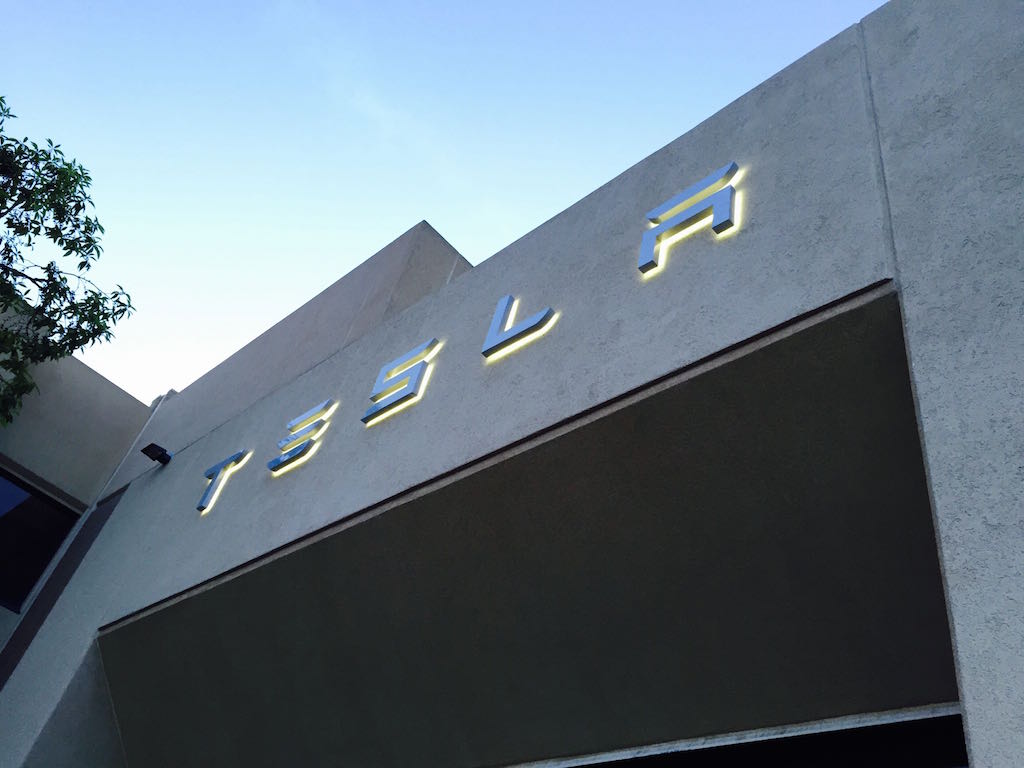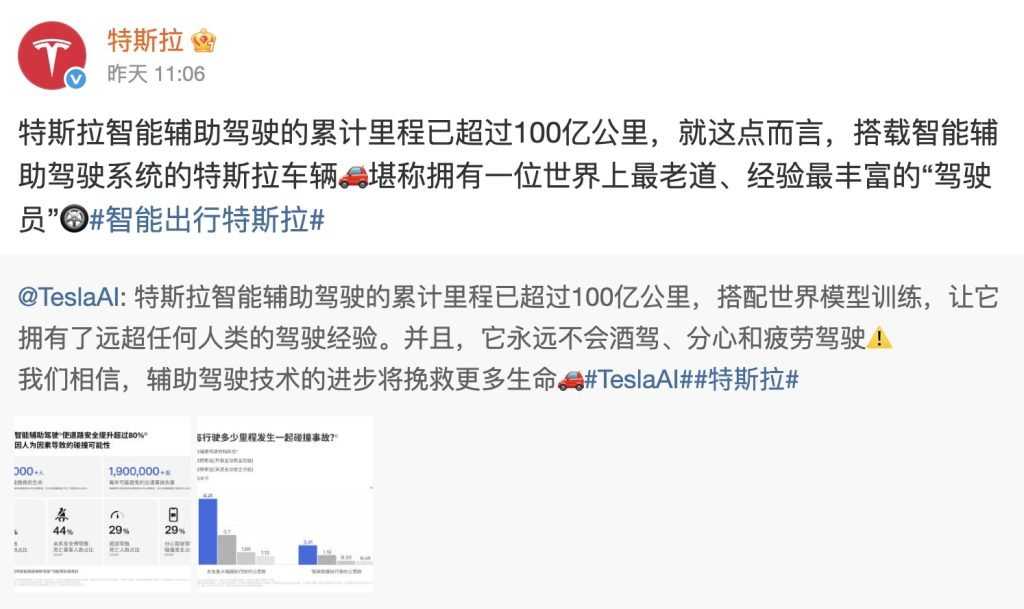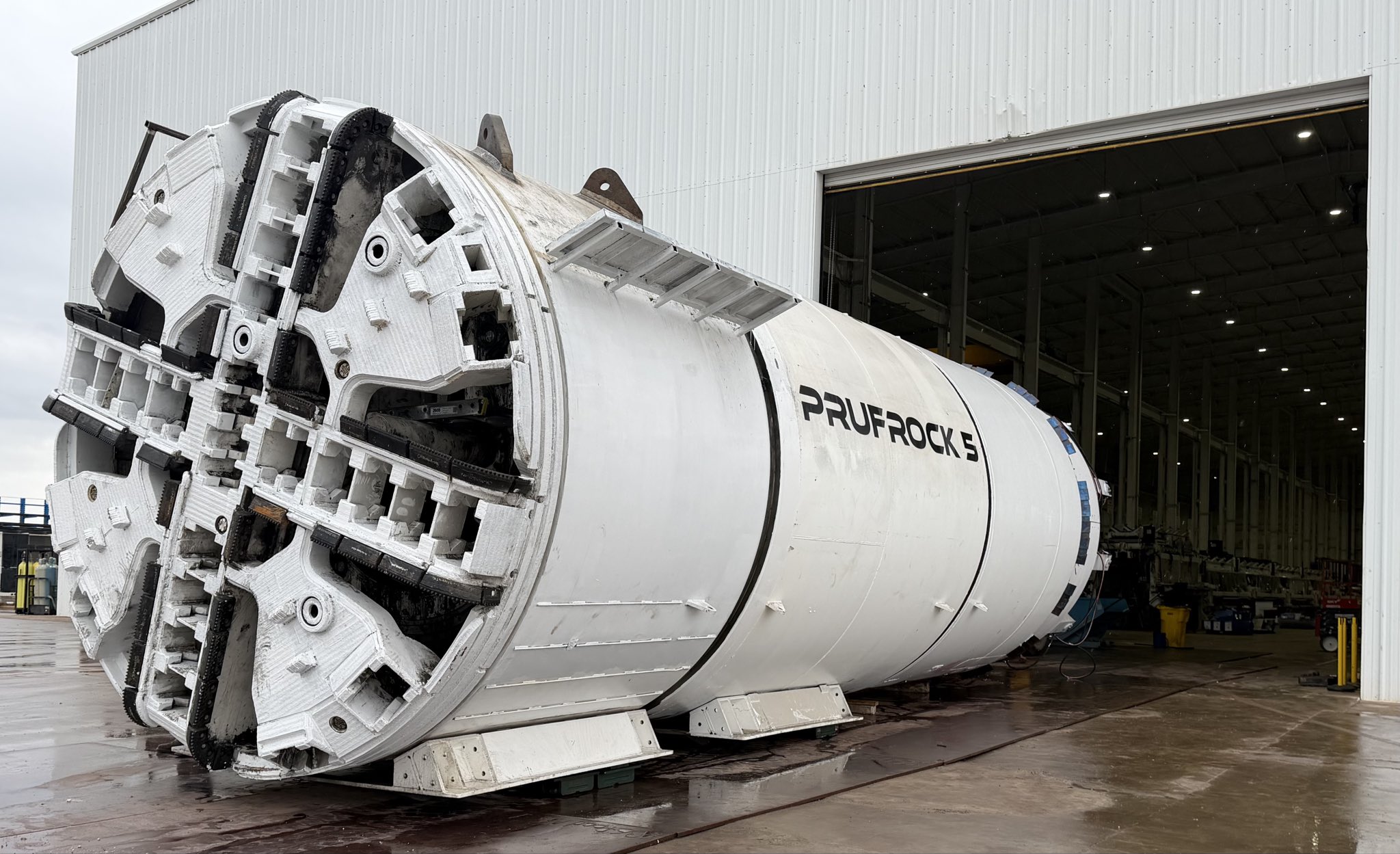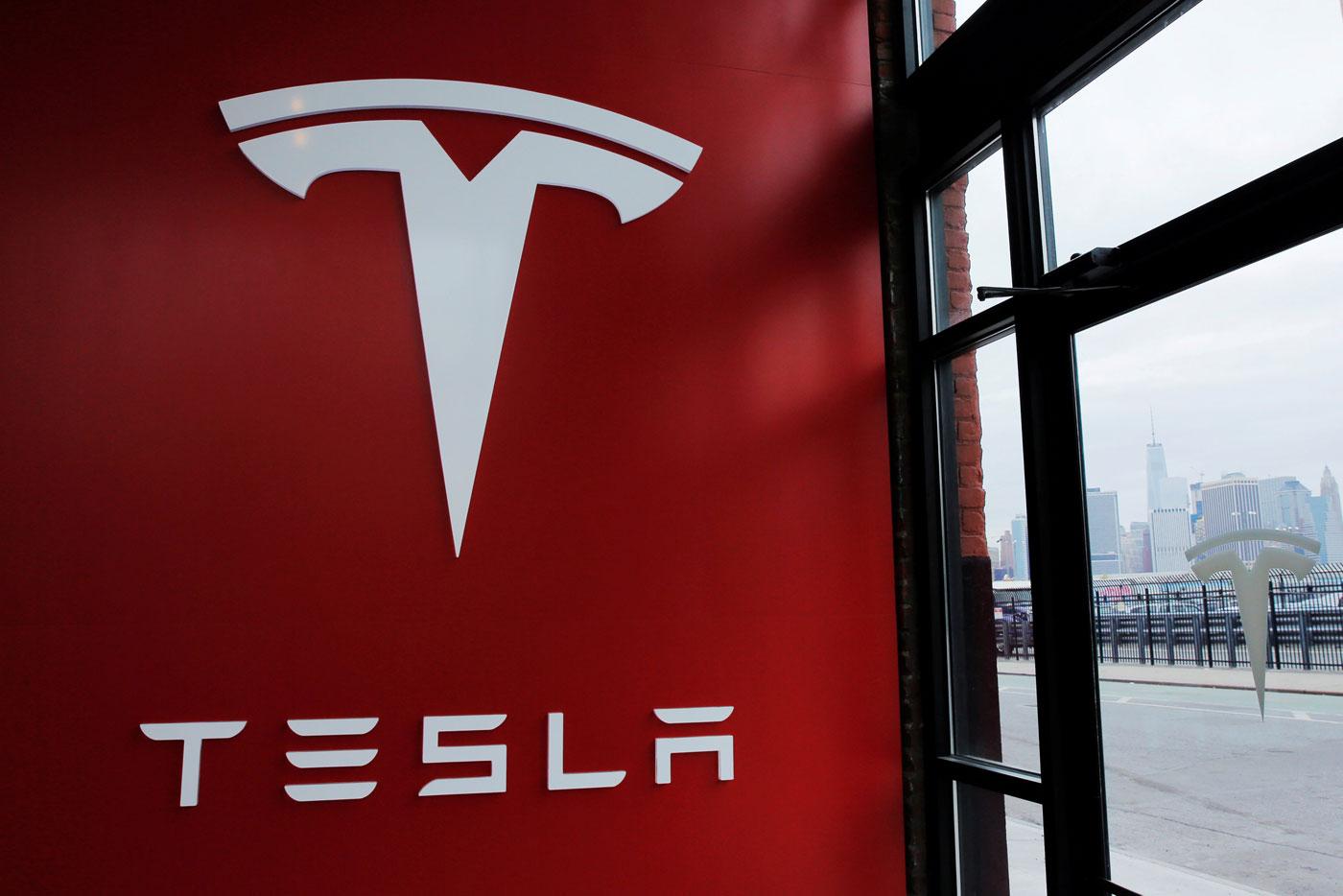News
Tesla fires back at Fortune with cheeky “Misfortune” blog post

The drama continues between Tesla and Fortune after the media outlet published a story questioning Tesla’s ethics claiming the company sold $2 billion worth of stock but failed to disclose that it was under investigation by the National Highway Transport Association (NHTSA) after Joshua Brown was killed when his Model S in Autopilot mode crashed into a tractor trailer.
Since the story was published, Tesla CEO Elon Musk defended the company’s position that news surrounding the Autopilot related death was not material to its stock price. Fortune disagreed citing that the stock price dropped $6 per share after news broke that the NHTSA was in fact investigating evidence surrounding Brown’s death. That’s when Musk fired back via email picking choice words with Fortune’s writer and stating, “Indeed, if anyone bothered to do the math (obviously, you did not) they would realize that of the over 1M auto deaths per year worldwide, approximately half a million people would have been saved if the Tesla autopilot was universally available. Please, take 5 mins and do the bloody math before you write an article that misleads the public.”
The Tesla vs Fortune debacle spilled over into the public Twittersphere between Fortune’s Editor Alan Murray and Elon Musk. The tweets continued throughout Wednesday with Alan Murray defending the media outlet’s position that Tesla did not disclose news of the Autopilot death. Fortune went as far as quoting statements made in an SEC filing by Tesla which warned investors that a fatal crash related to its Autopilot feature would be a material event to the company’s brand, business, and operating results. Tesla would later bring to light that Fortune mischaracterized the quote within the SEC filing.
Tesla has since released a blog post on this matter titled “Misfortune”.
Misfortune
Fortune’s article is fundamentally incorrect.
First, Fortune mischaracterizes Tesla’s SEC filing. Here is what Tesla’s SEC filing actually says: “We may become subject to product liability claims, which could harm our financial condition and liquidity if we are not able to successfully defend or insure against such claims.” [full text included below] This is just stating the obvious. One of the risks facing Tesla (or any company) is that someone could bring product liability claims against it. However, neither at the time of this SEC filing, nor in the several weeks to date, has anyone brought a product liability claim against Tesla relating to the crash in Florida.
Next, Fortune entirely ignores what Tesla knew and when, nor have they even asked the questions. Instead, they simply assume that Tesla had complete information from the moment this accident occurred. This was a physical impossibility given that the damage sustained by the Model S in the crash limited Tesla’s ability to recover data from it remotely.
When Tesla told NHTSA about the accident on May 16th, we had barely started our investigation. Tesla informed NHTSA because it wanted to let NHTSA know about a death that had taken place in one of its vehicles. It was not until May 18th that a Tesla investigator was able to go to Florida to inspect the car and the crash site and pull the complete vehicle logs from the car, and it was not until the last week of May that Tesla was able to finish its review of those logs and complete its investigation. When Fortune contacted Tesla for comment on this story during the July 4th holiday, Fortune never asked any of these questions and instead just made assumptions. Tesla asked Fortune to give it a day to confirm these facts before it rushed its story to print. They declined and instead ran a misleading article.
Here’s what we did know at the time of the accident and subsequent filing:
- That Tesla Autopilot had been safely used in over 100 million miles of driving by tens of thousands of customers worldwide, with zero confirmed fatalities and a wealth of internal data demonstrating safer, more predictable vehicle control performance when the system is properly used.
- That contrasted against worldwide accident data, customers using Autopilot are statistically safer than those not using it at all.
- That given its nature as a driver assistance system, a collision on Autopilot was a statistical inevitability, though by this point, not one that would alter the conclusion already borne out over millions of miles that the system provided a net safety benefit to society.
Given the fact that the “better-than-human” threshold had been crossed and robustly validated internally, news of a statistical inevitability did not materially change any statements previously made about the Autopilot system, its capabilities, or net impact on roadway safety.
Finally, the Fortune article makes two other false assumptions. First, they assume that this accident was caused by an Autopilot failure. To be clear, this accident was the result of a semi-tractor trailer crossing both lanes of a divided highway in front of an oncoming car. Whether driven under manual or assisted mode, this presented a challenging and unexpected emergency braking scenario for the driver to respond to. In the moments leading up to the collision, there is no evidence to suggest that Autopilot was not operating as designed and as described to users: specifically, as a driver assistance system that maintains a vehicle’s position in lane and adjusts the vehicle’s speed to match surrounding traffic.
Fortune never even addresses that point. Second, Fortune assumes that, putting all of these other problems aside, a single accident involving Autopilot, regardless of how many accidents Autopilot has stopped and how many lives it has saved, is material to Tesla’s investors. On the day the news broke about NHTSA’s decision to initiate a preliminary evaluation into the incident, Tesla’s stock traded up, not down, confirming that not only did our investors know better, but that our own internal assessment of the performance and risk profile of Autopilot were in line with market expectations.
The bottom line is that Fortune jumped the gun on a story before they had the facts. They then sought wrongly to defend that position by plucking boilerplate language from SEC filings that have no bearing on what happened, while failing to correct or acknowledge their original omissions and errors.
Full text referenced above:
We may become subject to product liability claims, which could harm our financial condition and liquidity if we are not able to successfully defend or insure against such claims.
“Product liability claims could harm our business, prospects, operating results and financial condition. The automobile industry experiences significant product liability claims and we face inherent risk of exposure to claims in the event our vehicles do not perform as expected resulting in personal injury or death. We also may face similar claims related to any misuse or failures of new technologies that we are pioneering, including autopilot in our vehicles and our Tesla Energy products. A successful product liability claim against us with respect to any aspect of our products could require us to pay a substantial monetary award. Our risks in this area are particularly pronounced given the limited number of vehicles and energy storage products delivered to date and limited field experience of our products. Moreover, a product liability claim could generate substantial negative publicity about our products and business and would have material adverse effect on our brand, business, prospects and operating results. We self-insure against the risk of product liability claims, meaning that any product liability claims will have to be paid from company funds, not by insurance.”

Elon Musk
Elon Musk proposes Grok 5 vs world’s best League of Legends team match
Musk’s proposal has received positive reception from professional players and Riot Games alike.

Elon Musk has proposed a high-profile gaming challenge for xAI’s upcoming Grok 5. As per Musk, it would be interesting to see if the large language model could beat the world’ best human League of Legends team with specific constraints.
Musk’s proposal has received positive reception from professional players and Riot Games alike, suggesting that the exciting exhibition match might indeed happen.
Musk outlines restrictions for Grok
In his post on X, Musk detailed constraints to keep the match competitive, including limiting Grok to human-level reaction times, human-speed clicking, and viewing the game only through a camera feed with standard 20/20 vision. The idea quickly circulated across the esports community, drawing commentary from former pros and AI researchers, as noted in a Dexerto report.
Former League pro Eugene “Pobelter” Park expressed enthusiasm, offering to help Musk’s team and noting the unique comparison to past AI-versus-human breakthroughs, such as OpenAI’s Dota 2 bots. AI researcher Oriol Vinyals, who previously reached Grandmaster rank in StarCraft, suggested testing Grok in RTS gameplay as well.
Musk welcomed the idea, even responding positively to Vinyals’ comment that it would be nice to see Optimus operate the mouse and keyboard.
Pros debate Grok’s chances, T1 and Riot show interest
Reactions weren’t universally optimistic. Former professional mid-laner Joedat “Voyboy” Esfahani argued that even with Grok’s rapid learning capabilities, League of Legends requires deep synergy, game-state interpretation, and team coordination that may be difficult for AI to master at top competitive levels. Yiliang “Doublelift” Peng was similarly skeptical, publicly stating he doubted Grok could beat T1, or even himself, and jokingly promised to shave his head if Grok managed to win.
T1, however, embraced the proposal, responding with a GIF of Faker and the message “We are ready,” signaling their willingness to participate. Riot Games itself also reacted, with co-founder Marc Merrill replying to Musk with “let’s discuss.” Needless to say, it appears that Riot Games in onboard with the idea.
Though no match has been confirmed, interest from players, teams, and Riot suggests the concept could materialize into a landmark AI-versus-human matchup, potentially becoming one of the most viewed League of Legends events in history. The fact that Grok 5 will be constrained to human limits would definitely add an interesting dimension to the matchup, as it could truly demonstrate how human-like the large language model could be like in real-time scenarios.
Tesla has passed a key milestone, and it was one that CEO Elon Musk initially mentioned more than nine years ago when he published Master Plan, Part Deux.
As per Tesla China in a post on its official Weibo account, the company’s Autopilot system has accumulated over 10 billion kilometers of real-world driving experience.
Tesla China’s subtle, but huge announcement
In its Weibo post, Tesla China announced that the company’s Autopilot system has accumulated 10 billion kilometers of driving experience. “In this respect, Tesla vehicles equipped with Autopilot technology can be considered to have the world’s most experienced and seasoned driver.”
Tesla AI’s handle on Weibo also highlighted a key advantage of the company’s self-driving system. “It will never drive under the influence of alcohol, be distracted, or be fatigued,” the team wrote. “We believe that advancements in Autopilot technology will save more lives.”
Tesla China did not clarify exactly what it meant by “Autopilot” in its Weibo post, though the company’s intense focus on FSD over the past years suggests that the term includes miles that were driven by FSD (Beta) and Full Self-Driving (Supervised). Either way, 10 billion cumulative miles of real-world data is something that few, if any, competitors could compete with.
Advertisement
–>

Elon Musk’s 10-billion-km estimate, way back in 2016
When Elon Musk published Master Plan Part Deux, he outlined his vision for the company’s autonomous driving system. At the time, Autopilot was still very new, though Musk was already envisioning how the system could get regulatory approval worldwide. He estimated that worldwide regulatory approval will probably require around 10 billion miles of real-world driving data, which was an impossible-sounding amount at the time.
“Even once the software is highly refined and far better than the average human driver, there will still be a significant time gap, varying widely by jurisdiction, before true self-driving is approved by regulators. We expect that worldwide regulatory approval will require something on the order of 6 billion miles (10 billion km). Current fleet learning is happening at just over 3 million miles (5 million km) per day,” Musk wrote.
It’s quite interesting but Tesla is indeed getting regulatory approval for FSD (Supervised) at a steady pace today, at a time when 10 billion miles of data has been achieved. The system has been active in the United States and has since been rolled out to other countries such as Australia, New Zealand, China, and, more recently, South Korea. Expectations are high that Tesla could secure FSD approval in Europe sometime next year as well.
News
Elon Musk’s Boring Company reveals Prufrock TBM’s most disruptive feature
As it turns out, the tunneling startup, similar to other Elon Musk-backed ventures, is also dead serious about pursuing reusability.

The Boring Company has quietly revealed one of its tunnel boring machines’ (TBMs) most underrated feature. As it turns out, the tunneling startup, similar to other Elon Musk-backed ventures, is also dead serious about pursuing reusability.
Prufrock 5 leaves the factory
The Boring Company is arguably the quietest venture currently backed by Elon Musk, inspiring far fewer headlines than his other, more high-profile companies such as Tesla, SpaceX, and xAI. Still, the Boring Company’s mission is ambitious, as it is a company designed to solve the problem of congestion in cities.
To accomplish this, the Boring Company would need to develop tunnel boring machines that could dig incredibly quickly. To this end, the startup has designed Prufrock, an all-electric TBM that’s designed to eventually be fast enough as an everyday garden snail. Among TBMs, such a speed would be revolutionary.
The startup has taken a step towards this recently, when The Boring Company posted a photo of Prufrock-5 coming out of its Bastrop, Texas facility. “On a rainy day in Bastrop, Prufrock-5 has left the factory. Will begin tunneling by December 1. Hoping for a step function increase in speed,” the Boring Company wrote.
Prufrock’s quiet disruption
Interestingly enough, the Boring Company also mentioned a key feature of its Prufrock machines that makes them significantly more sustainable and reusable than conventional TBMs. As per a user on X, standard tunnel boring machines are often left underground at the conclusion of a project because retrieving them is usually more expensive and impractical than abandoning them in the location.
As per the Boring Company, however, this is not the case for its Prufrock machines, as they are retrieved, upgraded, and deployed again with improvements. “All Prufrocks are reused, usually with upgrades between launches. Prufrock-1 has now dug six tunnels,” the Boring Company wrote in its reply on X.
The Boring Company’s reply is quite exciting as it suggests that the TBMs from the tunneling startup could eventually be as reusable as SpaceX’s boosters. This is on brand for an Elon Musk-backed venture, of course, though the Boring Company’s disruption is a bit more underground.
News
Tesla accused of infringing robotics patents in new lawsuit

Tesla is being accused of infringing robotics patents by a company called Perrone Robotics, which is based out of Charlottesville, Virginia.
The suit was filed in Alexandria, Virginia, and accuses Tesla of knowingly infringing upon five patents related to robotics systems for self-driving vehicles.
The company said its founder, Paul Perrone, developed general-purpose robotics operating systems for individual robots and automated devices.
Perrone Robotics claims that all Tesla vehicles utilizing the company’s Autopilot suite within the last six years infringe the five patents, according to a report from Reuters.
Tesla’s new Safety Report shows Autopilot is nine times safer than humans
One patent was something the company attempted to sell to Tesla back in 2017. The five patents cover a “General Purpose Operating System for Robotics,” otherwise known as GPROS.
The GPROS suite includes extensions for autonomous vehicle controls, path planning, and sensor fusion. One key patent, U.S. 10,331,136, was explicitly offered to Tesla by Perrone back in 2017, but the company rejected it.
The suit aims to halt any further infringements and seeks unspecified damages.
This is far from the first suit Tesla has been involved in, including one from his year with Perceptive Automata LLC, which accused Tesla of infringing on AI models to interpret pedestrian/cyclist intent via cameras without licensing. Tesla appeared in court in August, but its motion to dismiss was partially denied earlier this month.
Tesla also settled a suit with Arsus LLC, which accused Autopilot’s electronic stability features of infringing on rollover prevention tech. Tesla won via an inter partes review in September.
Most of these cases involve non-practicing entities or startups asserting broad autonomous vehicle patents against Tesla’s rapid iteration.
Tesla typically counters with those inter partes reviews, claiming invalidity. Tesla has successfully defended about 70 percent of the autonomous vehicle lawsuits it has been involved in since 2020, but settlements are common to avoid discovery costs.
The case is Perrone Robotics Inc v Tesla Inc, U.S. District Court, Eastern District of Virginia, No. 25-02156. Tesla has not yet listed an attorney for the case, according to the report.








